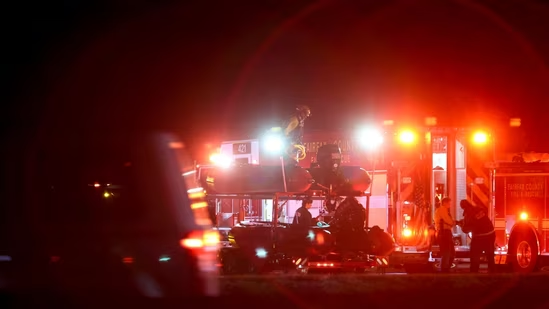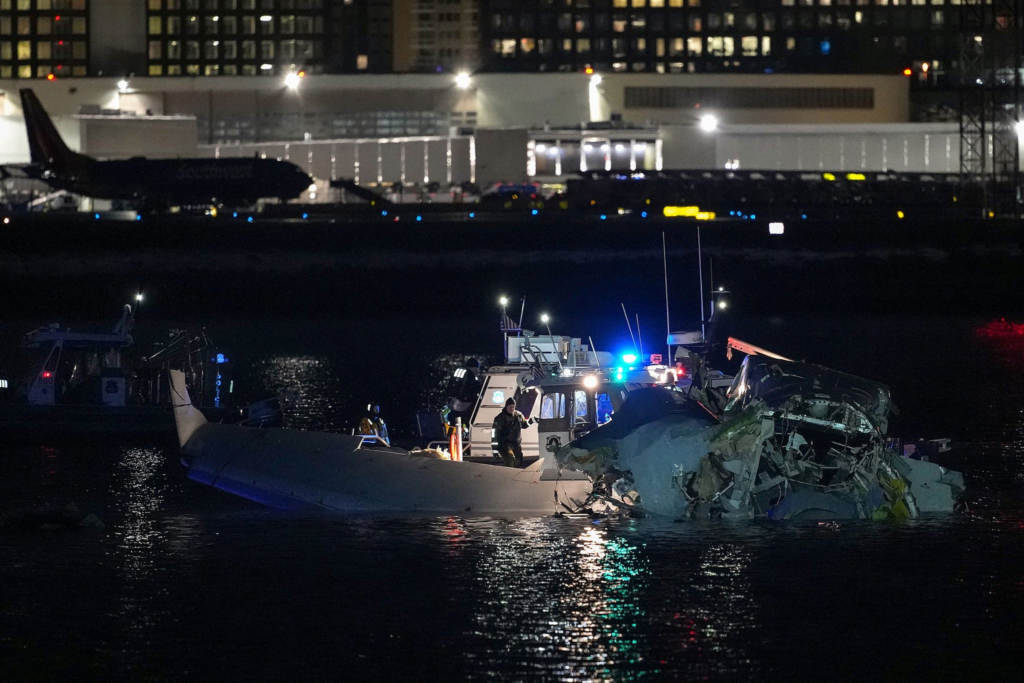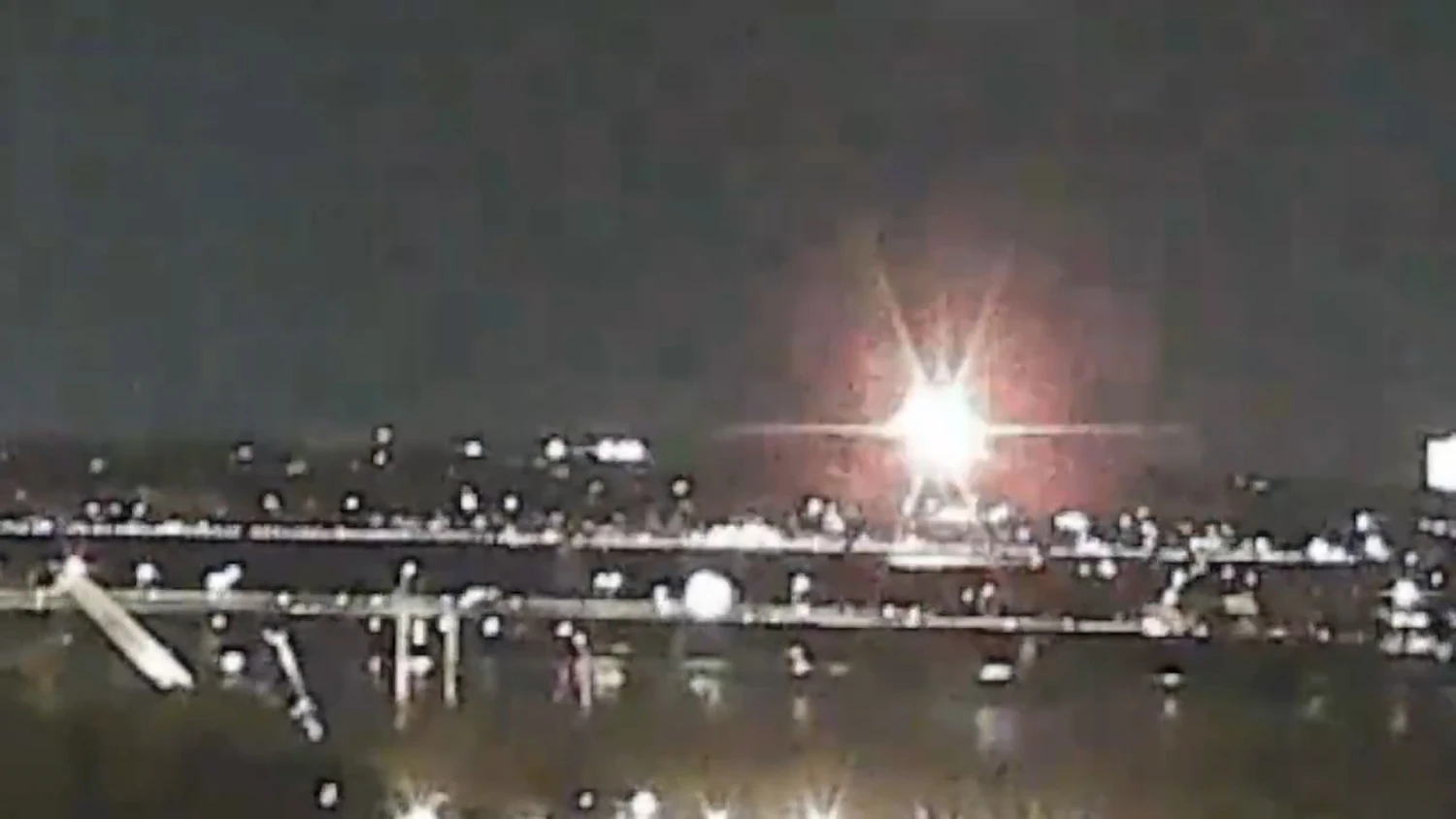A mid-air collision near Washington has left the nation grappling with grief and unanswered questions. Late last night, a Passenger Jet Collides with Army Chopper, which was carrying 64 people, resulting in a fiery explosion over the Potomac River, just five kilometers from the White House.
Rescue operations are ongoing, but the tragic incident has already claimed at least 18 lives, with dozens more feared lost. The disaster has sent shockwaves across the nation as authorities scramble to uncover the cause behind this horrific accident.
The Collision: A Tragic Encounter in Washington Skies
The collision occurred over the Potomac River, a serene waterway now marked by tragedy. The passenger jet, an American Airlines regional flight operated by PSA, was en route from Wichita, Kansas, to Washington Reagan National Airport. Meanwhile, the military helicopter, identified as a Black Hawk Sikorsky H-60, was carrying three US Army soldiers.
Witnesses describe a horrifying scene as the two aerial vehicles collided mid-air, igniting a massive fireball that illuminated the night sky. A widely circulated video captured the catastrophic moment, showing the instant the two crafts collided and burst into flames. The wreckage plummeted into the Potomac River, with debris scattering across the water and nearby land.
Read : 19 Years of Trust Fly by Night as 68,000 Flyers Cancel Jeju Air Tickets After Plane Crash
Initial data from the passenger jet’s radio transponder indicated a rapid loss of altitude moments before the collision. Whether this was due to mechanical failure, human error, or external factors remains under investigation. The FAA and NTSB are currently leading the inquiry, with assistance from military officials.
Rescue Efforts and the Human Toll
Rescue operations were launched immediately after the collision, with teams working tirelessly through the night to recover bodies and search for survivors. So far, 18 bodies have been pulled from the Potomac River. However, the fate of the remaining passengers and crew members remains uncertain.
The rescue mission has been hampered by challenging conditions, including the freezing January temperatures and the extensive debris field. Divers and rescue teams have faced significant difficulties navigating the murky waters of the Potomac, searching for any signs of life amidst the wreckage.
A Passenger Jet with 60 on board collided with US Army chopper in Washington pic.twitter.com/k9E8zm56FJ
— ABS (@iShekhab) January 30, 2025
First responders have described the scene as harrowing, with shattered pieces of the aircraft and helicopter spread over a wide area. Many families of the victims have gathered near the crash site, anxiously awaiting news of their loved ones. The emotional toll on the families, first responders, and the community is immeasurable.
Ronald Reagan National Airport has suspended all take-offs and landings in response to the incident. This has further disrupted air traffic in the region, compounding the challenges faced by aviation authorities.
Reactions and Questions About Safety
The incident has drawn reactions from across the country, including a statement from US President Donald Trump. Expressing his condolences, Trump said, “May God bless their souls. Thank you for the incredible work being done by our first responders.” He assured the nation that he is monitoring the situation closely and will provide updates as more details emerge.
American Airlines has also acknowledged the tragedy, stating, “We’re aware of reports that American Eagle flight 5342…has been involved in an incident. We will provide information as it becomes available.” This brief statement has done little to calm public concern about air travel safety, especially given the proximity of the crash to Washington’s political center.

Aviation safety experts have raised questions about the circumstances leading to the collision. Was there a failure in communication between the air traffic control tower and the pilots? Did the weather or technical malfunctions play a role? These are critical questions that need answers to prevent such a tragedy from recurring.
The collision has also reignited debates about the safety protocols surrounding the operation of civilian and military aircraft in shared airspace. Washington is a high-security zone with restricted airspace, making this incident all the more alarming.
A Community in Mourning
As the investigation continues, Washington and the nation are in mourning. The tragedy serves as a grim reminder of the unpredictable nature of air travel and the devastating consequences of human and technical errors. Families affected by the disaster are left grappling with loss and uncertainty, seeking solace in community and faith.
The Potomac River, a symbol of Washington’s natural beauty, now bears the scars of this tragic event. Memorials are expected to be held in honor of the victims, with community leaders and organizations stepping up to provide support for those affected.

While the nation awaits answers, the priority remains the recovery of all passengers and crew members, as well as supporting their families. The crash is a stark reminder of the importance of rigorous safety standards and effective coordination in aviation, especially in regions with dense air traffic.
This mid-air collision near Washington has left an indelible mark on the nation’s collective consciousness. As the investigation unfolds, it is imperative for authorities to identify the root causes and implement measures to prevent future tragedies. The incident underscores the critical need for stringent safety protocols and continuous improvements in aviation technology and coordination.
In the coming weeks, the FAA, NTSB, and military officials will undoubtedly face intense scrutiny as they piece together the events leading up to the collision. For now, the nation grieves, and the Potomac River stands as a solemn witness to this heartbreaking disaster.

